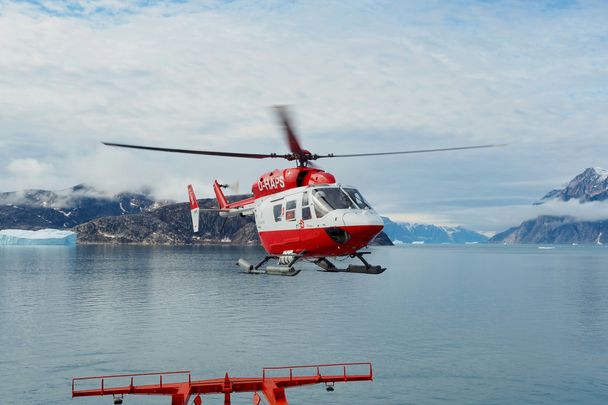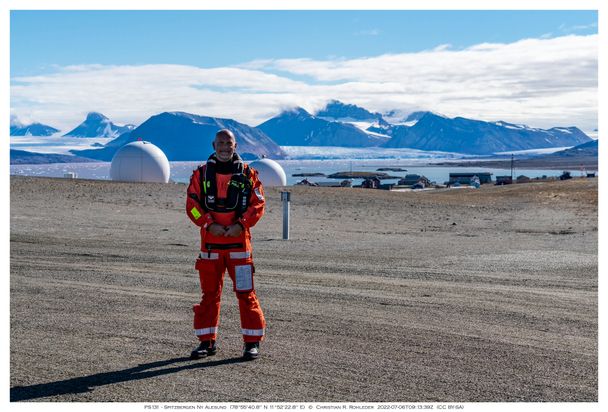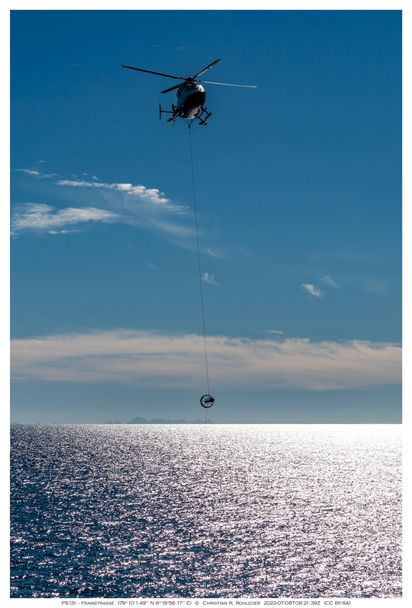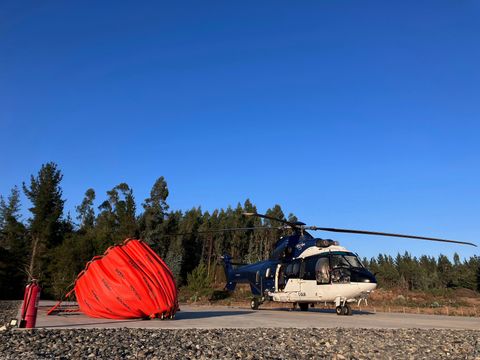Powering climate research aboard Polarstern

For nearly a decade, NHC Northern Helicopter’s (based in Emden, Germany) Lars Vaupel has been one of the pilots accompanying climate research expeditions aboard the Alfred Wegener Institute's icebreaker Polarstern. A few days before embarking on a new adventure, Rotor spoke to him about his day on board a research vessel and how helicopters are helping to better understand the effects of climate change.
It's the end of July 2023 and Lars Vaupel, a helicopter pilot for more than 24 years, is preparing for a new mission aboard Polarstern, a research icebreaker operated by the German Alfred Wegener Institute that specialises in studying climate change and its effects on ice and the oceans. Vaupel, who began his career as a pilot in the German Armed Forces flying the BO105, is one of two pilots on board the ship. "We are responsible for supporting the scientists on board. One day we use our EMBird, a sonar-like device on our helicopter, to measure the electromagnetic thickness of the ice, the next day we take the scientists onto the ice to collect samples, and we are also the means of transport for anything that needs to go where the ship can't," explains Vaupel, who made his first deployment as a pilot on Polarstern in 2008. "And that's not all: We also use our helicopter as an outpost to check the sea ice, and if something goes wrong, our BK117 is our HEMS helicopter and much more - with our helicopters we are the backbone of Polarstern.”

One icebreaker, two helicopters and four people
Vaupel is not the only one on board to look after and operate the helicopters. "We have a total of three BK117s, two of which are always on board Polarstern when we go out on a mission, while the third remains in Germany as a back-up. To operate these two helicopters, we need two pilots and two mechanics," explains Vaupel, who has already completed more than 25 missions aboard the research icebreaker. "And we have a good supply of spare parts on board. Our expeditions usually last eight weeks and we are far from any maintenance centres. But fortunately the BK117 is a very robust helicopter and we have had only minor repairs and maintenance in the past". And it is equipped to cope with the tough conditions, with an emergency flotation device, weather radar and polar equipment - everything you need to survive seven days in the wilderness in case of an emergency and much more.

But operating and maintaining a helicopter in often difficult conditions with strong winds, low temperatures and the sea is not the only challenge: "When you spend eight weeks together on a ship, you really have to work as a team. That's why it's not just a team member's professional qualifications that count, but also their social skills. We spend eight weeks together on a boat, measuring no longer than 120 metres. So you really have to get on well with each other.”

A day aboard Polarstern
The Arctic and Antarctic are usually the destinations for Polarstern expeditions. And in these regions, it's often the weather that dictates the pace. "We start the day with a weather briefing by the meteorologist. In the Arctic, the weather can also change quickly. Depending on the weather forecast, the pilot suggests what could be done," says Vaupel. "One of our two helicopters always remains on board Polarstern, as it is our backup in case of problems with the first helicopter.” When asked what's really memorable about helicopter flights from Polarstern, Vaupel enthuses: "We are able to see nature and animals in a way that others can only do by watching documentaries on National Geographic. When you see a pod of killer whales swimming underneath your helicopter or an ice bear on an ice shelf nearby, it really connects you to nature.”




